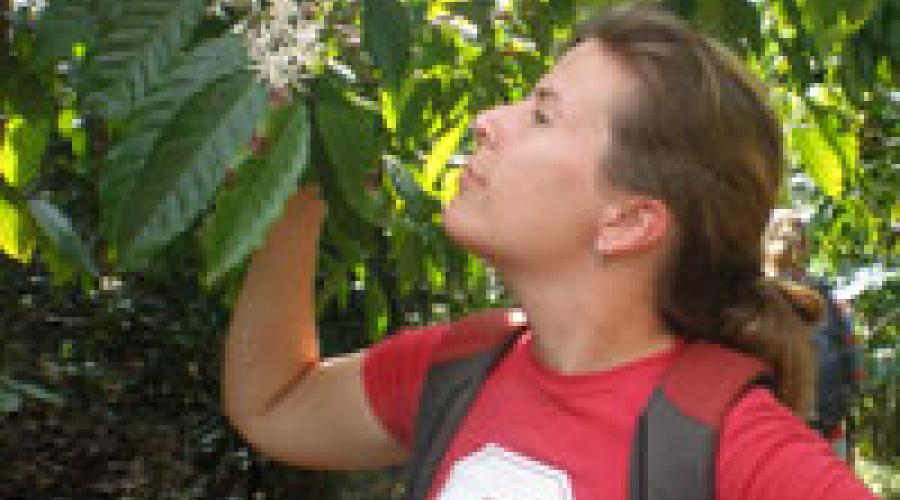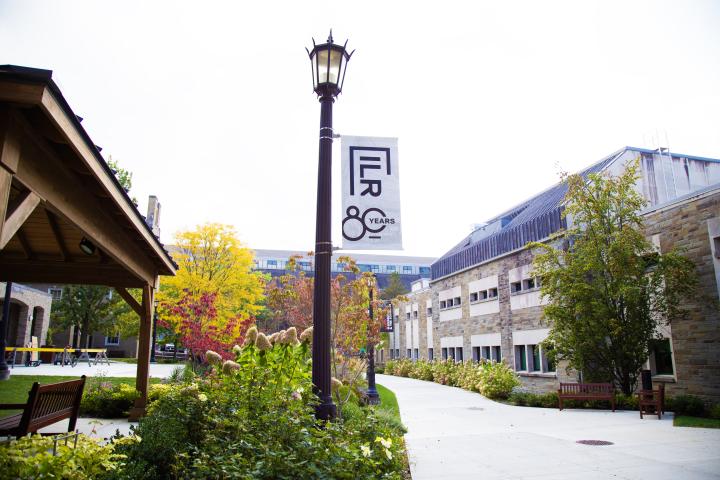
Cassady Fendlay, BSILR'10 experiences life, history and culture in Chiapas, Mexico
The winter break trip to Chiapas, Mexico, was an amazing experience. I traveled with my classmates from IARD/LATA 4010 "Experience Latin America: Chiapas." We spent the fall semester learning about this southernmost state in Mexico.
I thought I understood it in terms of economics, politics, agriculture, religion, etc, but actually being in Chiapas taught me so much more than I imagined. The places we visited were beautiful, the people were kind and friendly, and the food was delicious. The professors set aside time for discussions and helped us develop observations on the problems facing each area we visited, and encouraged us to generate solutions.
Words cannot do it justice…
I have this phrase written in my travel journal, referring to our first stop on the trip, the mangrove forest on the Pacific coast. Mangroves are a type of tree that can live in either freshwater or salt water, and they act as natural buffer zones in tropical areas where freshwater meets the ocean. Mangrove forests are like swamps, and they are surrounded by water. Our group traveled exclusively by boat!
It was amazing to me that the drivers of our water taxis could navigate the nebulous water channels to take us from one place to another without getting lost. Our lodging was a small resort called Barra de Zacapulco, run by the indigenous people of the mangroves. What it lacked in amenities it made up for in overwhelming natural beauty. We stayed in tiny huts with grass roofs right on the beach. While staying there, it occurred to me that I had never seen a beach that wasn’t enclosed by boardwalks, looming hotels, restaurants and tourist shops. Here, the trees and tall grasses came all the way up to the sand, and it was so beautiful I am still at a loss of words to describe it.
The New Year in the old world…
Our next stop could not have been any more different than the mangroves. We drove up into the mountains, and stayed at a coffee-plantation-turned-luxury-resort called Finca Argovia. It was owned by the great-grandson of a German man who bought an enormous tract of land before the Mexican Revolution and turned it into a coffee plantation. Here we learned a lot about coffee, but also quite a bit about history and the gulf that exists between plantation owners and peasants. We spent New Year’s Eve at Finca Argovia, enjoying all the amenities of an American life in the middle of the mountains, where everyone outside the plantation lives a life of mere subsistence.
I will die in the corn fields…
Our next stop was Tuxtla Guttieriez, in the central part of the state. Here we drove out to a corn-growing area, to talk to farmers about a very contentious issue in Mexico. Corn is central to a traditional Mexican diet, and the type of corn used to make tortillas, tamales and the like is not the sweet, white type we eat in America. Mexicans grow many varieties of Criollo corn, which have large, deep yellow kernels.
However, each year it becomes harder and harder to be a corn farmer in Mexico. International market forces, such as cheap, subsidized corn from the U.S. and rising prices of petro-based fertilizer have put pressure on traditional Mexican corn farmers. We spoke with one farmer named Don Rene, who related growing Mexican corn with being an Aztec and preserving Aztec folkways. He persists in growing Criollo corn even though he is unable to profit from it, telling us he knows he will die in his corn field, but that is better than giving up farming corn all together.
San Cristóbal de las Casas
We next arrived in a scenic town in the mountains called San Cristóbal de las Casas. This town still bears a historic Spanish look, and people travel from all over the world to visit. It was the first real city we had been in since arriving in Chiapas, and we enjoyed shopping, eating in restaurants, and going to dance clubs at night.
It was quite nice but, again, it left me feeling somewhat conflicted and guilty when I spent all day with peasants and then came back to enjoy city life at night. It increased my sense of privilege, and my awareness of the disparity between socio-economic classes in Mexico and internationally.
No photos please…
From San Cristóbal, we traveled further up into the mountains to a village called San Juan Chamula, which is populated by the Chamula Indians. Here we were first hosted by a Chamula elder, who invited us into his home and told us his life story and many things about Chamula traditions and religion. Afterward we went to the church in San Juan Chamula. This church is quite unique in that it is not Catholic, but Mayan. The Chamula Indians practice a form of Mayan religion that has borrowed some Catholic elements, but still retains a distinct, indigenous identity.
We were allowed into the church as observers, but photos were strictly forbidden. Photos, they believe, destroy the sacredness of objects and places. The church was full of shrines to the saints, but it lacked any pews. Instead, the floor was covered in fresh pine needles, and the devout came and sat on the floor, clearing a spot to make an altar with candles. They sat in front of these altars, often the whole family, making small offerings and chanting prayers. It was quite amazing and beautiful to behold.
Do Zapatistas drink Coke?
Next we visited Oventik, a Zapatista caracol, or seat of governance. The Zapatistas are a group of indigenous Mayans who have established their own government, which they call the “Good Government”, while the Mexican government is the “Bad Government”. In a Zapatista caracol, everyone takes turns serving on the governing board for 1 week, and men and women are equally represented on the board.
The Zapatista government provides services for the villages it represents, including clinics and schools that teach in the Tzotzil dialect rather than Spanish. However, the Zapatistas still fear aggression from the Mexican government, so the people cover their faces when they participate in government functions, and are wary about answering questions that they feel might contain vital information on day-to-day functions. However, the Zapatistas we spoke to were very candid to answer other questions, including mine: Do Zapatistas drink Coke? It seems a rebellious movement promoting the rights of indigenous people should shun the multinational giant, which has a sordid history in Chiapas due to water-rights issues. The man who answered my question acknowledged the hypocrisy of drinking Coke, but told me that was an education campaign that needed to happen, and that for now the people of the area still enjoy the beverage.
And finally, the monkeys!
On this whole trip, I had been vocal about my hope that I would see a real, live, wild monkey. However, we had made it almost to the end of the 19-day adventure and I had not seen a single wild monkey. Finally, we took a boat ride up the Usumacinta River to a remote location containing Mayan ruins, called Yaxchilan. Here, the howler monkeys were not only out and about in the tree tops, but they were exercising the impressive vocalization that gives them their name.
It was impressively loud, and made the whole area seem suddenly very much more jungle-like. Luckily for me, one of my traveling companions had brought binoculars, so I was able to see the noisy primates in good detail. The ruins we saw were also quite impressive. The scale and grandeur of these ancient cities is still apparent in their remnants. We were fortunate to be joined by a Mexican archeology student, who could read Mayan hieroglyphs and told us a considerable amount about the ancient Maya civilization.
The end, for now…
The ruins were the last few stops on our trip and soon I was back in the U.S. I will always cherish the memories I have of this trip, and the wonderful friends I met while traveling. I hope to one day return to Chiapas, as others who've participated in this class have, to work on development projects to serve the Chiapaneco people.
I highly recommend the IARD/LATA 4010 class to other students. It is a wonderful way to travel, and a learning experience of incredible value. I am enormously thankful for the ILR International Experience Grant, which made all of this possible for me.


